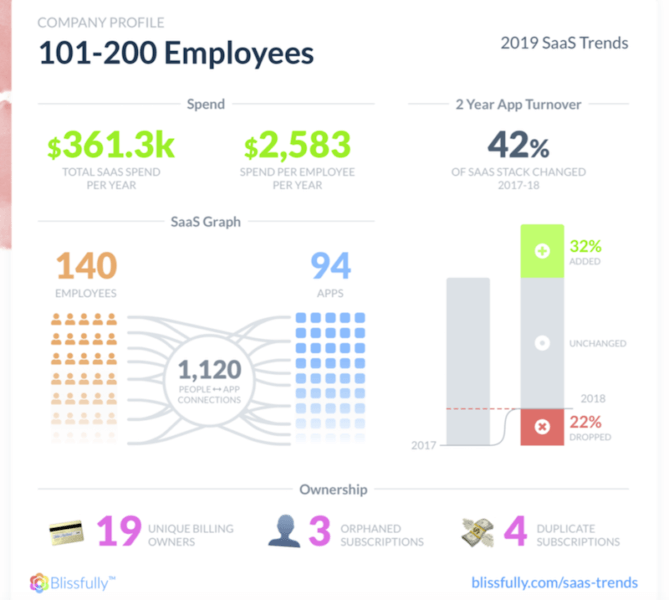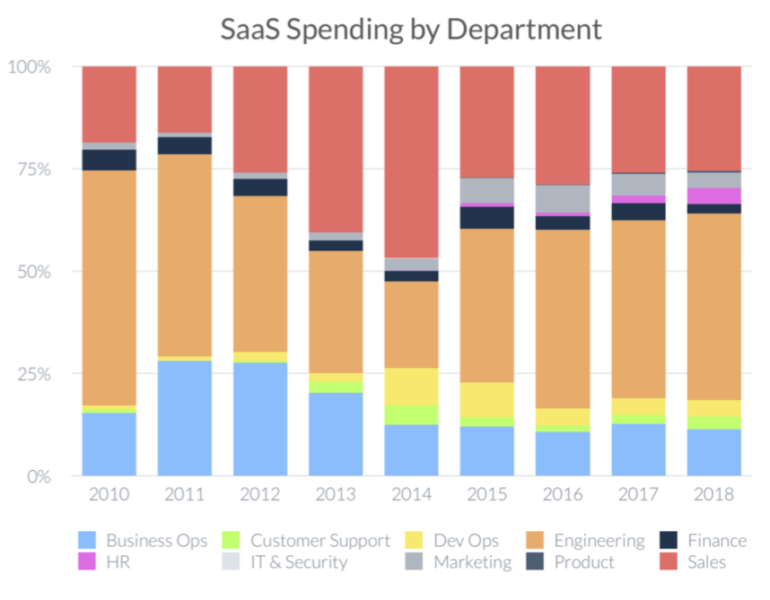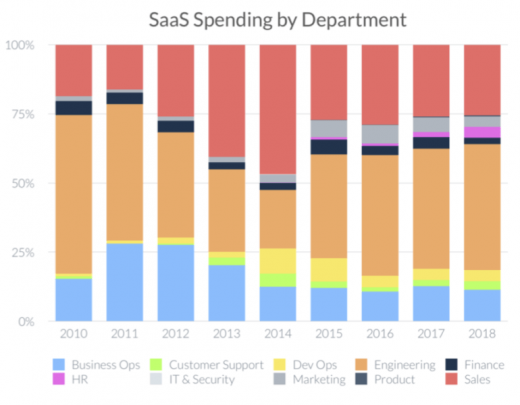New report: Most companies have ‘orphaned’ SaaS apps in their stacks
Such subscriptions might go unused, while 40+ percent of SaaS stacks on average have changed their applications in the last two years.
The average company with 200 to 500 employees uses about 123 Software-as-a-Service (SaaS) applications these days.
That’s part of the portrait of companies’ typical SaaS stacks, as depicted in the latest report on the topic from the New York City-based startup, Blissfully. While marketers’ software tools these days are almost entirely cloud-based, so are other departments’, and application management has become a significant operational issue.
The New York City-based firm’s platform tracks SaaS application usage and spending for about a thousand brands, whose cumulative data is embodied in “2019 SaaS Trends” [free, email address required].

From the Blissfully report
Rapidly changing stacks. Compared to its previous two annual reports, the company said, the new version features new metrics like app turnover rate and duplicate subscriptions, and a new SaaS Graph, which visually depicts the connections between employees and SaaS apps.
One of this year’s biggest takeaway is that “companies are rapidly changing their SaaS stacks,” said CEO and founder Ariel Diaz via email, resulting in more than 40 percent of the average company’s SaaS applications changing in the last two years.
Additionally, nearly three-quarters of companies with 100+ employees have “orphaned” SaaS subscriptions, in which there is no billing owner — typically because the billing owner left the company.
Most of the applications are oriented toward the sales/marketing, business operations and engineering departments, while Blissfully finds that marketing represents only a small share:

From the Blissfully report
Other key findings from the report:
- For midsized companies, there are an average of 32 different billing owners for the SaaS subscriptions.
- On average, an employee uses eight SaaS applications. Companies with 50 or under employees have about 40 applications in total, while those with 1000+ employees have over 200.
- Spending on SaaS applications started to boom in 2014, to today’s annual average of about $343,000 for an organization. Per employee, that’s an average of $2884. For companies with 500 to a thousand employees, it’s an average of $3570 in SaaS spend per employee.
Why you should care. SaaS software is the norm these days for sales personnel and marketers, but managing the cloud-based tools can become a challenge because they are often accessible to multiple owners and managers across an organization. This report is one of the few to offer a look at how these stacks are actually operating.
Additionally, marketing tools, in particular, can be used across departments, including customer service, IT and sales, which means collaboration features need to be managed as well as spending or admin.
And, with SaaS applications increasingly integrated with each other, it’s vital that marketers and other business users keep on top of which cloud-based tools are digesting the company’s customer data.
This story first appeared on MarTech Today. For more on marketing technology, click here.
Marketing Land – Internet Marketing News, Strategies & Tips
(33)



